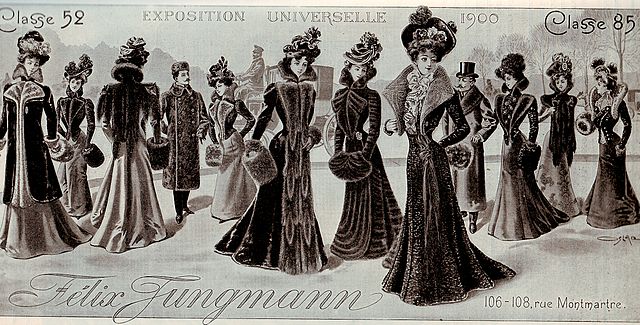Join us on a captivating journey through the rich history of French fashion. From the opulent dresses of Marie Antoinette to the groundbreaking designs of Coco Chanel, this article explores the evolution of French fashion through the ages. Immerse yourself in the glamour and elegance that has made French fashion a worldwide phenomenon, and discover the iconic designers and trends that have shaped the industry. Get ready to be enchanted by the allure and sophistication of centuries past as we embark on a historical tour of the evolution of French fashion.
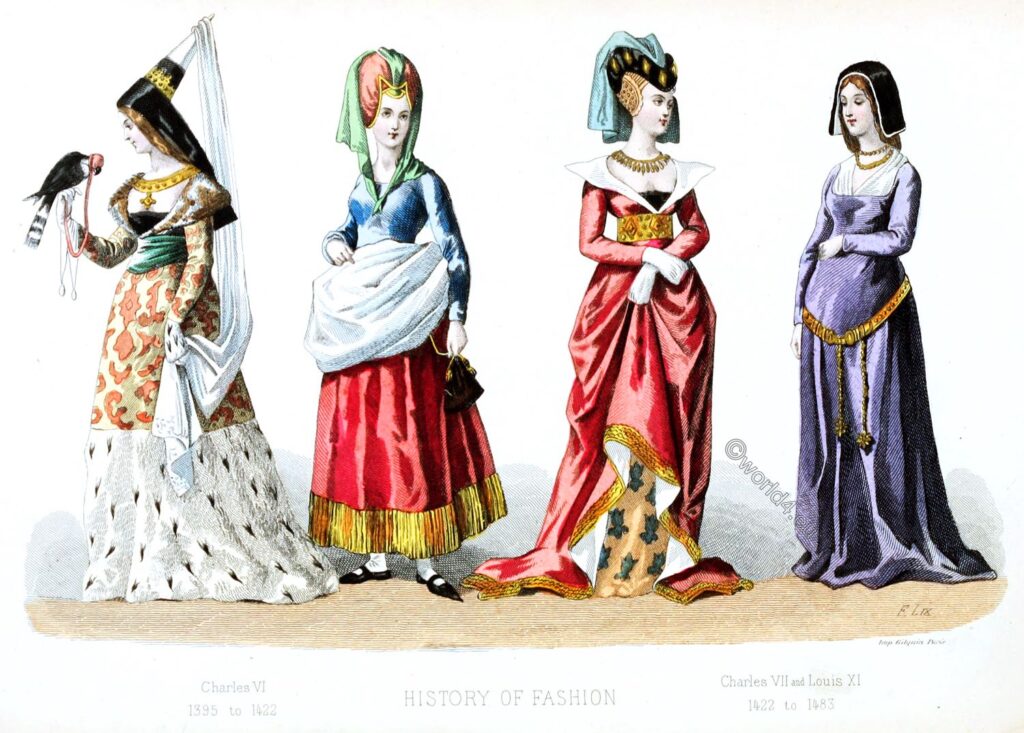
The Influence of French Fashion in History
Introduction
French fashion has long been admired and revered for its elegance, sophistication, and innovation. Throughout history, the fashion industry in France has played a pivotal role in shaping global trends and setting the standard for style. From the rise of French fashion in the 17th century to its impact on the modern world, this article will take you on a comprehensive journey through the rich and captivating history of French fashion.
The Rise of French Fashion in the 17th Century
The 17th century marked the beginning of the ascendancy of French fashion. King Louis XIV, known as the “Sun King,” played a significant role in establishing France as a fashion capital. He meticulously cultivated his image and transformed the French court into a center of fashion and luxury. The sumptuous fabrics, intricate embroidery, and lavish designs of French haute couture became synonymous with power and prestige. Paris became the epicenter of fashion, attracting influential designers and artisans from all over Europe.
The French Revolution and its Impact on Fashion
The French Revolution in the late 18th century brought about a dramatic shift in the fashion industry. The opulence and excess of the monarchy were rejected, and a more democratic style emerged. The revolutionaries sought simplicity and equality, reflected in fashion choices such as the adoption of neoclassical styles reminiscent of ancient Greece and Rome. The concept of “liberté, égalité, fraternité” extended to fashion, and the revolutionary ideals influenced the evolution of style in France and beyond.
The Haute Couture Movement in the 19th Century
The 19th century witnessed the birth of haute couture, a term coined in Paris to describe the highest level of craftsmanship and design in fashion. Charles Frederick Worth, an Englishman who settled in Paris, is often credited as the father of haute couture. He introduced the concept of creating and presenting seasonal collections to clients, establishing himself as the first true fashion designer. The extravagant gowns and elaborate dresses showcased the artistry and creativity of French fashion, solidifying its reputation as the epitome of style and luxury.
French Fashion in the Roaring Twenties
The 1920s, often referred to as the Roaring Twenties, brought a significant shift in fashion. French designers such as Coco Chanel and Jean Patou revolutionized the industry by introducing a more relaxed and liberated aesthetic. The flapper style with its dropped waistlines, loose-fitting dresses, and cloche hats became a symbol of modernity and female empowerment. Paris continued to dominate the fashion world, setting trends and influencing the global fashion scene with its innovative and avant-garde designs.
The Iconic Styles of French Fashion
The Little Black Dress: A Wardrobe Staple
No article on French fashion would be complete without mentioning the iconic little black dress. Coco Chanel famously popularized this timeless staple in the 1920s, creating a garment that was elegant, versatile, and accessible to women of all social classes. The little black dress has since become a symbol of sophistication and style, a wardrobe essential that can be dressed up or down for any occasion.
The Breton Striped Shirt: A French Classic
The Breton striped shirt, known as the marinière, has become synonymous with French fashion. Originally worn by sailors in the 19th century, it was popularized by Coco Chanel who incorporated it into her collections. The simple yet chic design, featuring horizontal blue and white stripes, has transcended trends and remained a beloved fashion staple, capturing the essence of French effortless style.
The Chanel Suit: Timeless Elegance
The Chanel suit is a testament to Coco Chanel’s pioneering vision and innovation in women’s fashion. Introduced in the 1920s, the suit revolutionized women’s attire by offering a comfortable and elegant alternative to restrictive corsets and cumbersome dresses. With its boxy jacket and knee-length skirt, the Chanel suit exudes timeless elegance and has become a symbol of femininity and sophistication.
The Stiletto Heel: A Symbol of Power
The stiletto heel, with its slender and elongated silhouette, has long been associated with French fashion. Introduced in the 1950s by designer Roger Vivier, the stiletto heel became a symbol of power, femininity, and seduction. It added a touch of glamour and confidence to women’s outfits, elevating their stature both literally and figuratively. To this day, the stiletto heel remains an iconic shoe style favored by fashion-forward individuals around the world.
The Birkin Bag: A Status Symbol
No discussion of French fashion would be complete without mentioning the Birkin bag. Created by the luxury brand Hermès in collaboration with actress and fashion icon Jane Birkin, this handbag has achieved iconic status. With its timeless design, impeccable craftsmanship, and hefty price tag, the Birkin bag has become a symbol of wealth, status, and exclusivity. Coveted by fashion enthusiasts and collectors alike, it embodies the allure and desirability of French luxury.
French Fashion Designers and Their Contributions
Coco Chanel: Revolutionizing Women’s Fashion
Coco Chanel is undoubtedly one of the most influential figures in the history of French fashion. Known for her groundbreaking designs, she revolutionized women’s fashion and challenged societal norms. Chanel introduced simple, yet elegant designs that prioritized comfort and freedom of movement. She popularized the little black dress, championed the use of jersey fabric, and introduced functional yet fashionable accessories such as the quilted handbag and costume jewelry. Chanel’s legacy continues to inspire designers and shape the world of fashion.
Christian Dior: Shaping the New Look
Christian Dior’s New Look, presented in 1947, was a defining moment in French fashion history. After the austerity of World War II, Dior’s designs brought a sense of luxury, opulence, and femininity back into fashion. The silhouette featured a nipped-in waist, full skirts, and emphasized curves, offering a departure from the boxy styles of the war era. Dior’s innovative designs reinvigorated the fashion industry and solidified Paris as a global fashion capital.
Yves Saint Laurent: Redefining Femininity
Yves Saint Laurent was a true visionary in French fashion, known for his daring and innovative designs. He challenged traditional notions of femininity by introducing tuxedo suits for women, blurring the lines between masculine and feminine attire. Saint Laurent’s designs were characterized by their sharp tailoring, bold colors, and graphic prints. With his avant-garde approach, he redefined femininity and brought a new level of creativity and expression to the world of fashion.
Hubert de Givenchy: Iconic Elegance
Hubert de Givenchy was renowned for his classic yet sophisticated designs that epitomized timeless elegance. He dressed some of the most influential women of his time, including Audrey Hepburn, his lifelong muse. Givenchy’s creations exuded grace, refinement, and impeccable craftsmanship. From the iconic little black dress worn by Hepburn in “Breakfast at Tiffany’s” to the elegant evening gowns favored by royalty, Givenchy’s contributions to French fashion left an indelible mark on the industry.
Jean Paul Gaultier: Breaking Gender Norms
Jean Paul Gaultier was a trailblazer in the realm of French fashion, known for his avant-garde designs that challenged conventional beauty standards and gender norms. Gaultier’s collections often featured corsets, cone bras, and bold prints, subverting traditional notions of femininity and masculinity. He celebrated diversity and inclusivity, casting models of all ages, sizes, and backgrounds in his runway shows. Gaultier’s boundary-breaking designs continue to inspire and push the boundaries of fashion.
French Fashion Week: A Showcase of Excellence
The Birth of Fashion Week in Paris
Fashion Week, the biannual event showcasing new collections by designers, has its origins in Paris. The first-ever Fashion Week took place in 1945, organized by the Chambre Syndicale de la Haute Couture. The event aimed to promote French fashion after World War II and attract international buyers and press. Since then, Paris Fashion Week has become one of the most anticipated and prestigious events in the fashion industry, setting trends and influencing the direction of fashion for the upcoming seasons.
The Importance of Haute Couture Shows
Haute couture shows are the pinnacle of French fashion, where designers present their most extravagant and exclusive creations. These shows celebrate craftsmanship, creativity, and innovation, showcasing the meticulous artistry and attention to detail that goes into each garment. Haute couture is revered for its luxurious fabrics, intricate embroidery, and hand-sewn finishes. The shows provide a platform for designers to push boundaries, experiment with new techniques, and captivate audiences with their artistic vision.
The Role of Ready-to-Wear Collections
While haute couture represents the epitome of luxury and exclusivity, ready-to-wear collections play a crucial role in the fashion industry. Ready-to-wear, or prêt-à-porter, collections offer accessible and wearable designs that cater to a broader audience. French designers excel at creating ready-to-wear collections that combine style, quality, and affordability. These collections allow fashion enthusiasts to embrace the latest trends and showcase their personal style without sacrificing quality or craftsmanship.
The Digital Transformation of Fashion Week
In recent years, the fashion industry has undergone a digital transformation, and Paris Fashion Week has not been immune to these changes. With the rise of social media and digital platforms, fashion shows are no longer exclusive to industry insiders. Live-streaming, virtual reality experiences, and social media engagement have made fashion week more accessible and inclusive than ever before. Designers are increasingly using technology to showcase their collections, connect with audiences worldwide, and create immersive experiences that transcend physical boundaries.
The Impact of French Fashion Week on the Industry
French Fashion Week, with its grandeur and glamour, has a profound influence on the fashion industry. It sets trends, establishes the direction of fashion for the upcoming seasons, and serves as a platform for emerging designers to gain recognition. The high-profile attendees, from celebrities to influencers, help generate buzz and propel the industry forward. French Fashion Week not only shapes the global fashion landscape but also contributes to the economic growth and cultural significance of Paris as a fashion capital.
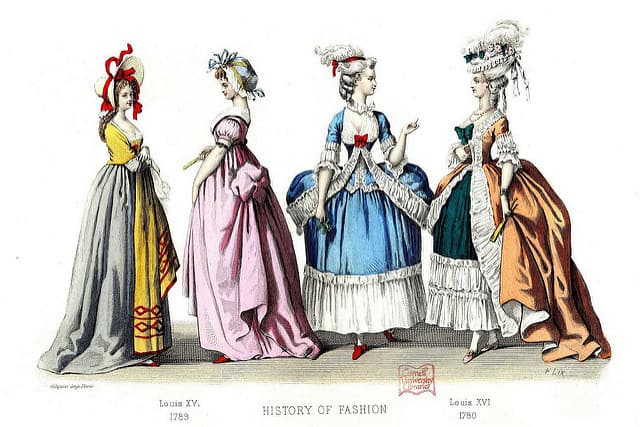
The French Fashion Capital: Paris
Paris as the International Fashion Hub
Paris has long been hailed as the international fashion hub, attracting designers, fashion enthusiasts, and industry professionals from around the world. The city’s rich history, vibrant culture, and artistic heritage make it an ideal setting for innovation and creativity. With its renowned fashion schools, prestigious fashion houses, and iconic landmarks, Paris continues to be the epicenter of the fashion world, dictating trends and setting the standard for style.
The Historical Significance of the Louvre Museum
The Louvre Museum, home to some of the world’s most famous works of art, holds historical significance for French fashion. The museum’s majestic halls and iconic architecture have served as stunning backdrops for fashion shows and editorial shoots. The juxtaposition of art and fashion creates a harmonious blend of creativity and inspiration.
The Fashionable Streets of Paris: From Champs-Élysées to Rue Saint-Honoré
The streets of Paris are renowned for their elegance and style, reflecting the city’s fashion-forward reputation. From the grandeur of Champs-Élysées to the chic boutiques of Rue Saint-Honoré, each street has its own unique charm and allure. Parisians effortlessly exude style, with their impeccable fashion sense and timeless sophistication. Shopping in Paris is an experience like no other, with a plethora of luxury brands, independent boutiques, and vintage treasures waiting to be discovered.
The Prestigious Fashion Schools in Paris
Paris is home to some of the most prestigious fashion schools in the world, attracting aspiring designers from all corners of the globe. Institutions such as the Institut Français de la Mode and the École de la Chambre Syndicale de la Couture Parisienne offer comprehensive programs that nurture talent and foster creativity. These schools provide students with the skills, knowledge, and opportunities necessary to carve out successful careers in the fashion industry.
The Legendary Shopping Experience in Paris
The shopping experience in Paris is legendary, offering a mix of luxury, craftsmanship, and exquisite taste. From the luxury department stores of Galeries Lafayette and Le Bon Marché to the historical shopping arcades of Passage des Panoramas and Galerie Vivienne, Paris provides a wealth of options for fashion enthusiasts. Whether searching for high-end designer pieces or unique vintage finds, the city’s diverse shopping scene caters to every style and budget.
French Fashion Icons: From Marie Antoinette to Brigitte Bardot
Marie Antoinette: The Ultimate Fashion Trendsetter
Marie Antoinette, the infamous queen of France, was a trendsetter and fashion icon of her time. Known for her extravagant and opulent style, she set the fashion agenda at the French court. With her lavish gowns, voluminous hairstyles, and elaborate accessories, Marie Antoinette epitomized the excesses of the 18th-century French aristocracy. Her iconic fashion choices continue to inspire designers and captivate fashion enthusiasts.
Coco Chanel: A Style Icon of the 20th Century
Coco Chanel’s influence extends far beyond her groundbreaking designs. She became a style icon in her own right, embodying the epitome of French chic. With her signature bob haircut, pearls, and timeless outfits, she personified simplicity, elegance, and effortless style. Chanel’s personal brand became synonymous with sophisticated minimalism, inspiring women around the world to embrace their individuality and exude confidence through fashion.
Brigitte Bardot: The Effortless French Beauty
Brigitte Bardot, the iconic French actress and model of the 1960s, captured the hearts and imaginations of people worldwide with her beauty and effortless style. Bardot’s signature tousled hair, winged eyeliner, and playful yet sensual fashion choices made her a symbol of French allure and femininity. Her fashion choices often featured figure-hugging dresses, bikini tops, and casual separates, encapsulating the spirit of French Riviera glamour.
Carla Bruni: The Modern French Muse
Carla Bruni, the former First Lady of France and supermodel, epitomizes modern French elegance. Known for her statuesque beauty and impeccable style, Bruni exudes sophistication and grace. Her fashion choices often showcase sleek tailoring, neutral color palettes, and timeless pieces that highlight her natural beauty and understated allure. Bruni continues to inspire fashion enthusiasts with her effortless and classic approach to style.
Jeanne Damas: The Influencer of French Chic
Jeanne Damas, the French influencer and entrepreneur, has gained international recognition for her quintessentially Parisian style. Known for her effortless yet feminine fashion choices, Damas has become a muse for designers and a source of inspiration for fashion enthusiasts worldwide. Her trademark looks often feature flowy dresses, vintage-inspired pieces, and a touch of bohemian charm, capturing the essence of French chic.
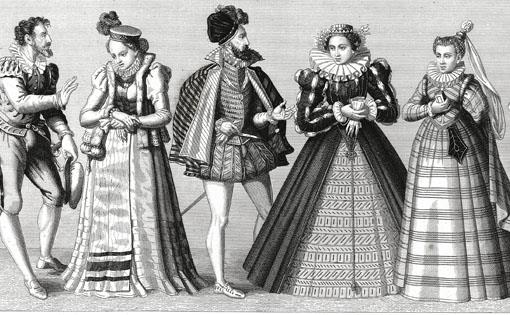
The Sustainability Movement in French Fashion
The Growing Importance of Ethical Fashion
In recent years, there has been a growing emphasis on ethical fashion and sustainable practices within the fashion industry. Consumers are increasingly aware of the social and environmental impact of their fashion choices and are demanding transparency and accountability from brands. French fashion houses have responded to this demand by integrating ethical practices into their production processes, ensuring fair wages, safe working conditions, and environmentally conscious practices.
French Fashion Brands Leading the Sustainable Movement
French fashion brands have been at the forefront of the sustainable fashion movement, championing eco-friendly materials and responsible manufacturing processes. Brands like Veja, known for their ethically sourced sneakers, and Ekyog, a pioneer in organic clothing, demonstrate that fashion can be both stylish and sustainable. These brands prioritize transparency, traceability, and ethical sourcing, inspiring others to follow suit.
The Shift towards Slow Fashion and Circular Economy
The shift towards slow fashion, characterized by a focus on quality, longevity, and mindful consumption, has gained traction in the fashion industry. French fashion brands are embracing this movement by creating timeless and durable pieces that stand the test of time. Additionally, the circular economy, which promotes recycling, upcycling, and reducing waste, has become a focal point for many fashion houses. Through initiatives such as clothing rental services and recycling programs, French brands are committing to a more sustainable and responsible fashion industry.
Innovations in Eco-friendly Materials
French fashion designers and innovators have been at the forefront of developing and utilizing eco-friendly materials. From sustainable alternatives to leather, such as Pinatex made from pineapple fibers, to eco-friendly dyes and organic cotton, these materials reduce the environmental impact of the fashion industry. By incorporating these innovations into their designs, French fashion brands are ensuring that style and sustainability go hand in hand.
The Impact of Sustainability on the Future of French Fashion
Sustainability is not just a passing trend but a necessary transformation for the fashion industry. French fashion, with its rich heritage and influence, has a significant role to play in shaping a more sustainable future. By embracing ethical practices, pioneering innovative materials, and raising awareness about conscious consumerism, French fashion can lead the way in fostering a responsible and environmentally friendly industry.
French Fashion: A Cultural Symbol
French Fashion as a Reflection of French Culture
French fashion serves as a reflection of the rich cultural heritage and values of the country. The elegance, sophistication, and attention to detail in French designs mirror the refined tastes and appreciation for artistry that is synonymous with French culture. French fashion embodies the ideals of beauty, craftsmanship, and individuality, creating a sense of pride and identity for the nation.
The Influence of French Art, Literature, and Film on Fashion
French fashion has been influenced and inspired by various forms of art, literature, and film throughout history. Artists like Picasso and Monet, the writings of Colette and Proust, and the iconic films of French cinema have all left an indelible mark on fashion. Designers often draw inspiration from the rich tapestry of French culture, incorporating elements of art, literature, and film into their collections, further blurring the lines between fashion and art.
French Fashion and National Identity
French fashion is deeply intertwined with national identity, serving as a powerful symbol of French culture, heritage, and creativity. It is viewed as an essential component of the French lifestyle and an expression of national pride. The French take great pride in their fashion industry, which is regarded as a pillar of the country’s cultural and economic influence on the world stage.
The Connection between French Fashion and Luxury
French fashion is closely associated with luxury, exemplified by the country’s longstanding tradition of craftsmanship and savoir-faire. French luxury brands, such as Chanel, Louis Vuitton, and Dior, are renowned for their exquisite craftsmanship, attention to detail, and use of the finest materials. The allure of French luxury stems from the meticulous artistry and craftsmanship that goes into creating each garment or accessory, making French fashion synonymous with opulence and sophistication.
French Fashion in Pop Culture and Global Influence
French fashion has undeniably left an indelible mark on popular culture around the world. From iconic designers and their muses to film representations of French fashion, the influence of French style is ever-present. French fashion continues to inspire designers, influencers, and consumers globally, with its timeless elegance, effortless chicness, and ability to transcend trends.
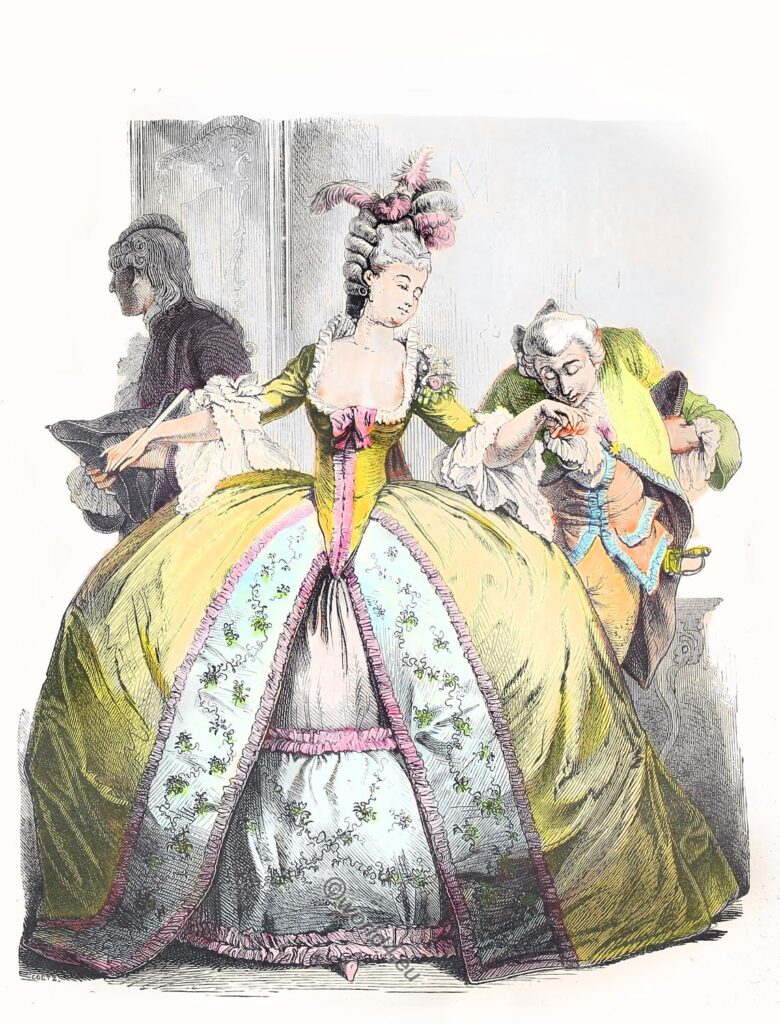
French Fashion: Challenges and Future Outlook
The Threat of Fast Fashion and Globalization
The rise of fast fashion and globalization poses challenges to the French fashion industry. Fast fashion, with its emphasis on cheap and disposable clothing, undermines the principles of quality, craftsmanship, and sustainability that French fashion prides itself on. Globalization has also led to increased competition from emerging fashion markets, making it imperative for French brands to adapt to changing consumer demands and market dynamics.
The Need for Diversity and Inclusion in French Fashion
Diversity and inclusion have become critical topics within the fashion industry, and French fashion is no exception. The industry has been criticized for its lack of representation and narrow standards of beauty. French fashion needs to embrace diversity in its models, designers, and creative teams to reflect the evolving notions of beauty and to cater to a wider range of consumers.
Digital Innovation and the Future of French Fashion
Digital innovation is reshaping the fashion industry, and French fashion must adapt to remain relevant. E-commerce, social media, and virtual experiences are revolutionizing how consumers engage with fashion, and French fashion brands need to embrace these platforms to reach new audiences and provide immersive experiences. Digital innovation also offers opportunities for sustainability, with technologies such as AI and data analytics driving efficiency and reducing waste in the fashion production cycle.
Fashion Industry in the Post-Pandemic World
The COVID-19 pandemic has had a profound impact on the global fashion industry, and French fashion has not been immune to its effects. Lockdowns and restrictions disrupted the supply chain, challenged traditional retail models, and forced the cancellation of fashion events. As the industry emerges from the pandemic, French fashion must navigate the new normal, adapting to changing consumer behaviors, embracing e-commerce, and prioritizing sustainability and resilience.
French Fashion’s Continued Relevance in the Changing World
Despite the challenges, French fashion remains an enduring and influential force in the fashion world. With its rich history, cultural significance, and commitment to craftsmanship and creativity, French fashion retains its allure and relevance. By embracing sustainability, diversity, and digital innovation, French fashion can stay at the forefront of the industry, shaping the future of fashion and continuing to captivate audiences around the world.
Conclusion
French fashion has left an indelible mark on the history of fashion, setting trends, defining style, and capturing the imagination of fashion enthusiasts around the world. From the rise of French fashion in the 17th century to the present day, French designers, style icons, and fashion houses have shaped the industry and propelled it forward. As the fashion landscape continues to evolve, French fashion is poised to adapt and remain at the forefront, holding its position as a global symbol of elegance, sophistication, and timeless beauty.
